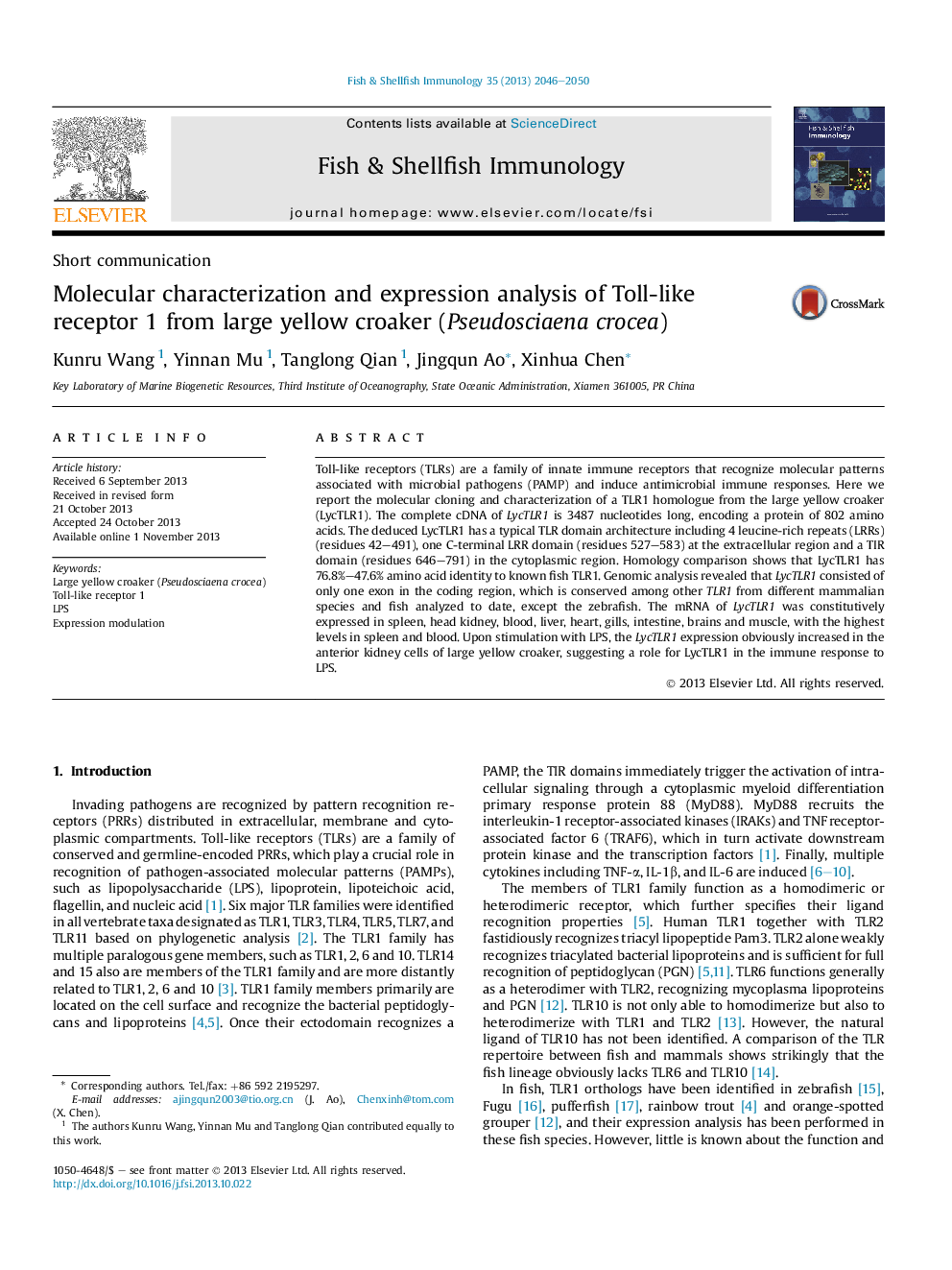| Article ID | Journal | Published Year | Pages | File Type |
|---|---|---|---|---|
| 2431566 | Fish & Shellfish Immunology | 2013 | 5 Pages |
•The cDNA and gene structures of large yellow croaker TLR1 were characterized.•Expression of LycTLR1 mRNA was detected in a wide range of tissues.•Expression of LycTLR1 mRNA increased when challenged with LPS.
Toll-like receptors (TLRs) are a family of innate immune receptors that recognize molecular patterns associated with microbial pathogens (PAMP) and induce antimicrobial immune responses. Here we report the molecular cloning and characterization of a TLR1 homologue from the large yellow croaker (LycTLR1). The complete cDNA of LycTLR1 is 3487 nucleotides long, encoding a protein of 802 amino acids. The deduced LycTLR1 has a typical TLR domain architecture including 4 leucine-rich repeats (LRRs) (residues 42–491), one C-terminal LRR domain (residues 527–583) at the extracellular region and a TIR domain (residues 646–791) in the cytoplasmic region. Homology comparison shows that LycTLR1 has 76.8%–47.6% amino acid identity to known fish TLR1. Genomic analysis revealed that LycTLR1 consisted of only one exon in the coding region, which is conserved among other TLR1 from different mammalian species and fish analyzed to date, except the zebrafish. The mRNA of LycTLR1 was constitutively expressed in spleen, head kidney, blood, liver, heart, gills, intestine, brains and muscle, with the highest levels in spleen and blood. Upon stimulation with LPS, the LycTLR1 expression obviously increased in the anterior kidney cells of large yellow croaker, suggesting a role for LycTLR1 in the immune response to LPS.
